Bison Tattoo Designs: Meaning, Symbolism & Inspiration for Your Next Ink
- Leonardo Pereira

- Apr 25
- 18 min read
Bison tattoos have emerged as powerful symbols in contemporary body art, drawing on the majestic animal's rich cultural significance and impressive physical presence. These distinctive designs connect wearers to themes of strength, endurance, and spiritual significance while offering versatile artistic possibilities. Whether you're drawn to the American buffalo's historical importance, Native American symbolism, or simply the striking visual impact of these magnificent creatures, bison tattoos provide meaningful options for both tattoo enthusiasts and first-timers seeking connection to nature and ancient wisdom.
What You'll Discover in This Guide
Bison tattoos carry profound symbolism rooted in the animal's historical and cultural significance. At their core, these designs represent strength, resilience, and endurance—qualities embodied by these massive creatures that can weigh up to 2,000 pounds yet move with surprising speed and agility. For many wearers, bison tattoos serve as personal reminders of their own inner strength and ability to weather life's challenges with steadfast determination.
In Native American traditions, the bison (often called buffalo) held sacred status as a symbol of abundance and gratitude. Many tribes depended on bison for survival, using every part of the animal for food, clothing, shelter, and tools. This relationship created deep spiritual connections, with the bison representing providence and respect for natural resources. Tattoos incorporating these themes often connect wearers to values of sustainability, gratitude, and living in harmony with nature.
The near-extinction and subsequent recovery of American bison has transformed these animals into powerful symbols of survival against overwhelming odds. By the early 1900s, bison populations had plummeted from tens of millions to just a few hundred animals due to commercial hunting and habitat destruction. Their remarkable comeback from the brink of extinction makes bison tattoos meaningful symbols of resilience, conservation, and the capacity to overcome seemingly insurmountable challenges.
For those with connections to American history and heritage, bison tattoos represent the spirit of the American West and frontier culture. The animal's silhouette instantly evokes vast prairies, rugged landscapes, and the complex history of westward expansion. These designs can express appreciation for American wilderness, historical awareness, or personal connection to Western states where bison once roamed freely and are now being reintroduced to their native habitats.
In spiritual contexts, bison symbolism connects to earth energy, abundance, and manifestation. The animal's strong connection to the ground—with its massive head positioned close to the earth—represents stability, groundedness, and practical wisdom. For those drawn to spiritual symbolism, bison tattoos can represent prayer, sacred connection to earth energies, and the wisdom that comes from staying grounded in physical reality while maintaining spiritual awareness.
The bison's role as a keystone species—one that significantly impacts its ecosystem—makes these tattoos meaningful for environmentalists and conservation advocates. Bison physically shape their environment through grazing patterns, wallowing behaviors that create microhabitats, and seed dispersal. This ecological importance transforms bison tattoos into statements about environmental stewardship, biodiversity, and the interconnectedness of all living things within natural systems.
Popular Bison Tattoo Styles and Designs

Realistic bison tattoos showcase the animal's impressive features in lifelike detail, capturing the distinctive hump, massive head, curved horns, and shaggy coat with meticulous precision. These designs employ advanced shading techniques, careful attention to anatomical accuracy, and sometimes color work that brings the animal to life on skin. Portrait-style realistic bison typically focus on the animal's face and powerful gaze, while full-body realistic renderings might show the bison in motion across the plains or standing majestically against natural backgrounds. These detailed designs require larger placement areas and skilled artists experienced in wildlife portraiture.
American Traditional bison tattoos interpret these massive animals through the bold lines, limited color palette, and iconic styling of classic tattoo art. These designs typically feature strong black outlines, solid fills, and simplified but instantly recognizable bison silhouettes. The traditional approach often incorporates elements like arrows, feathers, or geometric patterns that enhance the Western or Native American associations while maintaining the distinctive bold aesthetic of this time-honored tattoo style. The durability of traditional techniques ensures these tattoos age well, maintaining their impact and legibility for decades.
Geometric bison designs deconstruct the animal's form into angular shapes, clean lines, and precise patterns that create striking modern interpretations. These contemporary designs might segment the bison into polygonal sections, incorporate sacred geometry patterns within the animal's silhouette, or use line work to create dimension and movement. The contrast between the primal, natural symbolism of the bison and the precise, mathematical execution of geometric tattooing creates visually compelling designs that appeal to those seeking modern aesthetic with traditional symbolism.
Watercolor bison tattoos combine structured outlines of the animal with fluid, painterly color techniques that mimic splashes, drips, and washes of pigment. These artistic interpretations might feature vibrant sunset hues bleeding beyond the bison's silhouette, abstract color fields suggesting prairie landscapes, or subtle earth tones that reference the animal's natural coloration. While visually stunning, these designs require consideration regarding longevity, as the subtle color transitions may need more frequent touch-ups to maintain their distinctive aesthetic over time.
Blackwork and dotwork techniques offer striking monochromatic approaches to bison imagery. Blackwork designs use solid black fills, bold negative space, and strong contrast to create powerful silhouettes and shadows. Dotwork bison tattoos build the image through patterns of individual dots, creating texture and dimension through dot density rather than traditional shading. These techniques create distinctive visual textures that can evoke both traditional tribal aesthetics and contemporary minimalism, making them versatile options for various personal styles.
Skull and bison combinations create powerful memento mori imagery that connects themes of strength with mortality awareness. These designs might feature bison skulls with impressive horns, sometimes adorned with feathers, flowers, or geometric patterns. The skull imagery references both the historical decimation of bison populations and traditional Native American practices of honoring the animal's spirit after death. These designs carry complex symbolism about respect for life, acknowledgment of death, and the enduring spiritual significance of the bison beyond its physical existence.
Ideal Placement Options for Bison Tattoos

Chest and back placements provide expansive canvas for detailed bison designs, allowing for impressive scale that captures the animal's majesty. Full chest pieces can showcase charging bison with dramatic movement, while upper back placements might feature the animal's distinctive profile against landscape elements. These larger placements accommodate realistic detail, complex backgrounds, or additional symbolic elements that create more narrative-driven designs. The flat surfaces and substantial space allow artists to develop fully realized compositions that do justice to the bison's impressive physical presence.
Forearm placements offer excellent visibility for bison tattoos while providing sufficient space for meaningful detail. Outer forearm designs create bold statements visible during everyday activities, while inner forearm placements offer more personal, selective visibility. The relatively flat surface accommodates both portrait-style bison heads and full-body silhouettes in profile. This placement works particularly well for American Traditional interpretations, geometric designs, or simplified blackwork that maintains visual impact without requiring extensive detail.
Upper arm and shoulder placements naturally complement the bison's powerful symbolism, placing this emblem of strength on the body's own power center. Bicep placements work well for compact designs focusing on the bison's head and horns, while shoulder caps can accommodate more dynamic compositions showing the animal in motion. Half-sleeve designs extending from shoulder to elbow provide space for contextual elements like prairie landscapes, storm clouds, or Native American symbolism that enhances the bison's cultural significance.
Thigh placements offer substantial space for larger, detailed bison compositions while maintaining privacy and placement flexibility. The thigh's flat, expansive surface accommodates realistic portraits, full-body scenes, or more elaborate designs incorporating multiple elements. This placement allows for selective visibility while providing the canvas size needed for the bison's impressive proportions. The thigh's natural muscle contours can enhance designs showing the animal's movement or power when the tattoo is thoughtfully aligned with the body's natural lines.
Calf placements create visible yet easily concealable options for bison tattoos. The diamond-shaped muscle provides natural framing for vertical designs showing standing bison or profile views. This placement offers good visibility during activities like swimming or sports while remaining coverable with long pants in professional settings. The calf's curved surface requires consideration regarding how the design wraps around the leg, with skilled artists adapting compositions to maintain proper proportion and readability from different angles.
Smaller, simplified bison designs work effectively for wrist, ankle, or behind-the-ear placements. Minimalist silhouettes, small geometric interpretations, or simple bison tracks can create meaningful symbolism without requiring extensive detail. These discreet placements allow for personal connection to bison symbolism in professional environments where larger tattoos might not be appropriate. While limited in size, these smaller placements can still carry the essential symbolic meaning of strength, resilience, and connection to nature that makes bison tattoos so significant.
See More: ⤵
Bison Tattoo Ideas for Men

Charging bison designs capture the animal's tremendous power and unstoppable momentum, creating dynamic tattoos that resonate with masculine energy. These action-oriented compositions show the bison with lowered head, powerful stance, and sometimes dust or ground elements suggesting movement and impact. The imagery connects to themes of determination, overcoming obstacles, and unstoppable progress toward goals—qualities many men seek to embody. These designs work particularly well as chest pieces, where the placement over the heart connects to themes of courage and forward momentum in life.
Weathered bison imagery incorporates elements like lightning, storm clouds, or harsh landscapes to emphasize themes of endurance through adversity. These designs show bison standing firm against environmental challenges, symbolizing resilience and steadfastness—qualities traditionally associated with masculine strength. The contrast between external chaos and the bison's stoic presence creates powerful visual storytelling about maintaining inner strength during difficult circumstances. These compositions often incorporate dramatic skies or landscape elements that enhance the narrative of overcoming challenges.
Hunting and heritage-themed bison tattoos connect to traditional masculine roles and historical practices. These designs might incorporate elements like bows, arrows, or spears alongside respectful depictions of bison, referencing the historical relationship between hunters and this significant prey animal. Rather than glorifying trophy hunting, these thoughtful compositions typically emphasize themes of respect, sustenance hunting, and the sacred relationship between hunter and hunted that characterized traditional Native American approaches to bison.
Skull and bison combinations appeal to men drawn to imagery that balances strength with mortality awareness. These designs might feature anatomically accurate bison skulls with impressive horns, sometimes integrated with elements like feathers, arrows, or geometric patterns. The skull imagery creates memento mori symbolism while maintaining connection to themes of endurance and power through the distinctive horn shapes that remain recognizable even in skeletal form. These designs often employ blackwork techniques that enhance their bold, masculine aesthetic.
Bison and landscape compositions create panoramic scenes that capture the animal in its natural environment, connecting to themes of freedom and wild nature that resonate with many men. These more elaborate designs might show bison against mountain backdrops, prairie settings, or dramatic skies that place the animal within the context of the American wilderness. The expansive quality of these tattoos creates visual storytelling about man's relationship with wild spaces and natural forces—themes that connect to masculine desires for exploration and connection with untamed environments.
Geometric and tribal-inspired bison designs offer contemporary masculine aesthetics through angular interpretation and bold pattern work. These stylized approaches reduce the bison to essential forms using straight lines, symmetrical patterns, or sacred geometry elements that create striking modern designs while maintaining the animal's recognizable silhouette. The precision and mathematical quality of these designs appeals to men drawn to contemporary tattoo styles while the primal symbolism of the bison maintains connection to traditional masculine themes of strength and endurance.
Bison Tattoo Ideas for Women

Feminine bison tattoo designs often incorporate floral elements that soften and enhance the animal's powerful symbolism. Wildflowers, prairie grasses, or botanical frames create beautiful contrasts with the bison's rugged form while referencing its natural habitat. These combinations balance strength with beauty, creating compositions that honor both the animal's power and the nurturing aspects of nature. Floral bison designs particularly appeal to women drawn to the balance of strength and gentleness, resilience and beauty that these combinations represent.
Maternal themes appear frequently in women's bison tattoos, with designs featuring mother bison with calves representing protective nurturing strength. These compositions highlight the female bison's fierce protection of their young alongside tender caregiving, creating powerful symbols of maternal love that doesn't compromise power. The contrast between the massive adult bison and vulnerable calf creates emotionally resonant imagery about the protective aspects of feminine strength and the courage required in nurturing roles.
Spiritual and cosmic bison designs connect the animal to celestial elements like stars, moons, or dream catchers, emphasizing the sacred feminine aspects of bison symbolism. These compositions might place the bison silhouette against night skies, incorporate crescent moons between horns, or integrate spiral patterns that reference feminine divine energy. The spiritual significance of the bison in Native American traditions makes these cosmic connections particularly meaningful, creating tattoos that represent intuitive wisdom, earth connection, and the cyclical nature of feminine energy.
Watercolor and artistic interpretations offer contemporary feminine approaches to bison imagery through fluid color techniques, abstract elements, or painterly styling. These designs might feature color washes extending beyond delicate bison outlines, splashes of vibrant color against minimalist silhouettes, or artistic interpretations that capture the essence of the animal through expressive rather than literal representation. The artistic approach allows for personal expression while maintaining connection to the bison's core symbolism of strength and resilience.
White buffalo designs hold particular significance for women drawn to spiritual symbolism, as the rare white bison holds special sacred status in many Native American traditions. Often considered a manifestation of White Buffalo Calf Woman—an important spiritual figure who brought sacred teachings to the Lakota people—white buffalo tattoos connect to themes of prophecy, spiritual abundance, and sacred feminine wisdom. These designs might render the bison in white ink, negative space, or with ethereal qualities that emphasize their spiritual significance.
Smaller, more delicate bison designs adapted for feminine placement preferences offer subtle yet meaningful options. Simplified silhouettes behind the ear, along the wrist, or on the ankle create personal connections to bison symbolism without requiring large-scale designs. These miniature interpretations might focus on just the bison's distinctive profile, tracks, or abstract representations that capture the essence of the animal's meaning. The contrast between the massive animal and its delicate representation creates interesting tension that appeals to women seeking subtle yet powerful symbolism.
Native American Influences in Bison Tattoo Art

Traditional Native American bison imagery incorporates distinctive artistic styles developed by various tribes with strong historical connections to these animals. Plains tribes like the Lakota, Blackfoot, and Cheyenne developed particular approaches to depicting bison in hide paintings, ledger art, and ceremonial objects. Tattoos drawing from these authentic traditions might feature profile views with simplified forms, specific color symbolism, or compositional approaches that honor these artistic lineages. Respectful designs acknowledge the specific tribal origins of particular styles rather than homogenizing diverse Native traditions.
Sacred symbolism surrounding the white buffalo carries profound spiritual significance in Native American traditions, particularly among Plains tribes. According to Lakota prophecy, the appearance of a white buffalo calf signals world transformation and renewed harmony. Tattoos referencing this sacred animal often incorporate spiritual elements like medicine wheels, feathers, or ceremonial imagery that honors its profound cultural importance. These designs require particular sensitivity and respect, ideally created in consultation with artists knowledgeable about appropriate representation of these sacred concepts.
Storytelling elements in Native American-influenced bison tattoos might incorporate symbolic imagery that communicates traditional narratives about the relationship between people and bison. These could include hunting scenes that emphasize respect and gratitude, origin stories where bison bring gifts to humanity, or symbols representing the animal's sacrifice for human survival. These narrative designs often use compositional techniques from traditional Native art forms like pictographs, winter counts, or ledger art that were developed specifically for visual storytelling.
Ceremonial and spiritual elements like medicine wheels, dreamcatchers, or sacred pipes sometimes accompany bison imagery in tattoos drawing from Native American traditions. These elements reference the ceremonial importance of bison in various tribal practices and beliefs. When approached with respect and understanding, these combinations can create meaningful designs that honor the spiritual significance of the bison beyond its physical importance as a resource. These spiritual dimensions require thoughtful consideration regarding cultural appropriation versus appreciation.
Contemporary Native American artists have developed modern interpretations of traditional bison symbolism, creating innovative approaches that honor heritage while incorporating contemporary artistic techniques. Tattoos inspired by these modern Native perspectives might blend traditional symbolism with current tattoo styles like realistic portraiture, geometric abstraction, or graphic design elements. These evolving interpretations demonstrate how indigenous relationships with bison continue to develop and remain relevant in contemporary contexts rather than existing only as historical artifacts.
The ethical considerations surrounding Native American-influenced tattoo designs cannot be overlooked. Approaching these cultural elements with respect requires research, understanding, and appropriate attribution. Consulting with Native artists or choosing designs created by indigenous tattooers ensures more authentic and respectful representation. Avoiding sacred or restricted symbols, understanding the specific tribal origins of particular artistic styles, and acknowledging the living nature of Native cultures helps create tattoos that honor rather than appropriate these profound cultural traditions.
See More: ⤵
Forearm Tattoos for Women: Styles, Inspiration, and Considerations
Sleeve Tattoos for Men: The Ultimate Guide to Designing and Rocking Your Ink
Best Friend Tattoos: Celebrating the Unbreakable Bond of Friendship
Wave Tattoo: Unleashing the Power and Beauty of the Ocean on Your Skin
Paw Print Tattoo: A Meaningful and Adorable Design Idea
Finding the Right Artist for Your Bison Tattoo

Selecting an artist with wildlife tattoo experience is crucial for capturing the bison's distinctive features accurately. Review portfolios specifically for examples of animal work—particularly large mammals with similar textures and proportions to bison. Notice how potential artists handle details like the bison's shaggy coat, distinctive hump, facial features, and proportions. Artists experienced with wildlife subjects understand anatomical structures and natural movement patterns that create authentic representations rather than generic or cartoonish interpretations.
For Native American-influenced designs, seek artists with knowledge and respect for these cultural traditions. While not necessarily requiring Native heritage themselves, artists should demonstrate understanding of appropriate representation, specific tribal styles, and the cultural significance of bison in indigenous contexts. Their portfolio and consultation approach should reflect respectful engagement with these traditions rather than superficial or stereotypical interpretations. Some clients prefer working directly with Native American tattoo artists who bring personal cultural connection and authentic understanding to these designs.
Technical considerations vary significantly depending on your chosen bison tattoo style. Realistic designs require artists skilled in detailed shading, texture creation, and possibly color realism techniques. Traditional style demands clean, bold linework and solid color application. Geometric approaches need precise line work and symmetry. Watercolor techniques require understanding of color flow and composition that maintains legibility as the tattoo ages. Evaluate artists based on their technical strengths in your preferred aesthetic rather than general reputation alone.
The consultation process provides essential opportunity to discuss your personal connection to bison symbolism. Prepare by considering what aspects of bison meaning resonate most strongly with your experience—whether strength, resilience, cultural heritage, or environmental values. Quality artists will ask thoughtful questions about your motivation and use this information to suggest design elements, placement options, or stylistic approaches that enhance the tattoo's personal significance. This collaborative approach often results in designs that exceed initial expectations while remaining true to your vision.
Consider placement-specific expertise when selecting your artist. Large-scale bison designs that wrap around curved body areas like shoulders or thighs require artists experienced in adapting flat designs to three-dimensional forms. Smaller, detailed designs need artists skilled at creating readable miniature imagery that will maintain clarity as it ages. During consultations, ask about the artist's experience with your specific placement and any recommendations they have for adapting your bison design to work optimally in that location.
Studio environment and professionalism significantly impact your tattoo experience, particularly for larger bison designs requiring extended sessions. Visit potential studios to assess cleanliness, organization, and overall atmosphere before committing to an artist. For designs with cultural elements, evaluate how the artist discusses these aspects—do they demonstrate knowledge and respect, or treat them merely as aesthetic patterns? Professional artists prioritize client education and informed consent, particularly for designs that incorporate culturally significant elements or require substantial time investment.
Aftercare Tips for Bison Tattoos
Follow your artist's specific aftercare instructions meticulously, as different studios may recommend slightly different protocols based on their techniques and products. Generally, keep the tattoo clean with mild, fragrance-free soap, apply appropriate healing ointment sparingly, avoid submerging in water, and protect from direct sunlight during the initial healing period (typically 2-4 weeks). For larger bison designs covering substantial body areas, consider how clothing might irritate the healing tattoo and choose loose-fitting options that minimize friction on the tattooed area.
Detailed bison tattoos with fine lines, subtle shading, or color work require particular attention during healing to preserve these elements. Avoid picking at scabs or peeling skin, as this can remove ink and create gaps in detailed areas like fur texture or facial features. Apply moisturizer regularly after the initial healing period to prevent the dry skin that can make detailed work appear faded or blurry. For blackwork or heavily saturated designs, be aware that some ink may rise to the skin's surface during healing, creating temporary scabbing that should not be disturbed.
Long-term care significantly impacts how well your bison tattoo ages, particularly for designs with fine details or color work. Apply sunscreen diligently to the tattooed area whenever it will be exposed to sunlight, as UV damage is the primary cause of tattoo fading. Regular moisturizing helps maintain skin elasticity, reducing the blurring that can occur as skin ages. These simple daily habits dramatically extend the life and clarity of your tattoo, preserving the distinctive features that make bison imagery so powerful.
Larger bison tattoos may require special consideration during the healing process. Designs covering substantial areas like the back, chest, or thigh might heal at different rates across the tattoo, with some sections feeling itchy or tight while others still feel tender. Resist the urge to scratch, and address dry or uncomfortable areas with gentle moisturizing. For extensive pieces, your artist might recommend staged healing photos to monitor progress, particularly for areas you cannot easily see yourself.
The healing process for tattoos incorporating different techniques varies significantly. Solid blackwork typically heals more predictably than fine line work or color blending. Watercolor techniques might appear to lose significant vibrancy during healing before settling into their final appearance. Understanding these normal variations helps manage expectations during the sometimes concerning healing process. When in doubt about any aspect of healing, contact your artist rather than seeking advice from non-professionals or general internet sources.
Schedule a follow-up appointment with your artist after the tattoo has fully healed (typically 4-6 weeks) to assess whether any areas need touch-ups or reinforcement. This is particularly important for detailed bison designs where small gaps might appear during healing or for color work that may have healed lighter than intended. Many artists include one free touch-up session within a specific timeframe after the initial tattoo. These follow-up sessions ensure your bison tattoo reaches its full potential and maintains its impressive visual impact.
FAQ About Bison Tattoos
What is the difference between a bison and buffalo tattoo?
While often used interchangeably in American culture, bison and buffalo are different animals. American bison (Bison bison) are native to North America and feature distinctive humped shoulders and massive heads. True buffalo species include the African Cape buffalo and Asian water buffalo, with different physical characteristics. Most "buffalo tattoos" in Western contexts actually depict American bison. The confusion stems from early European settlers who called bison "buffalo," creating a misnomer that persists in common language. For tattoo purposes, designs labeled as either buffalo or bison in American contexts typically represent the same iconic North American animal.
What does a bison tattoo symbolize?
Bison tattoos primarily symbolize strength, endurance, and resilience. In Native American traditions, they represent abundance, gratitude, and sacred connection to the earth. Their near-extinction and recovery story makes them powerful symbols of survival against overwhelming odds. Bison also represent American heritage, the spirit of the West, and connection to wilderness. In spiritual contexts, they symbolize groundedness, earth energy, and practical wisdom. For environmentalists, bison tattoos may represent ecological awareness and conservation values, as these animals are keystone species that significantly impact their ecosystems.
Where is the best placement for a bison tattoo?
The ideal placement depends on your design complexity and size preferences. Chest and back areas provide expansive canvas for detailed, larger designs that capture the animal's majesty. Forearms offer good visibility and sufficient space for meaningful detail while allowing coverage when needed. Upper arms and shoulders naturally complement the bison's powerful symbolism. Thighs provide substantial space while maintaining privacy and placement flexibility. For smaller, simplified designs, wrists, ankles, or behind-the-ear placements can create meaningful symbolism without requiring extensive detail. Consider both aesthetic appeal and practical factors like professional environment when choosing your placement.
How much do bison tattoos typically cost?
Bison tattoo pricing varies significantly based on size, complexity, artist experience, and geographic location. Small, simple designs might start around $100-200, while detailed, larger pieces can range from $500 to several thousand dollars for extensive work. Realistic or highly detailed bison designs require more time and skill, increasing cost accordingly. Most reputable artists charge either by the hour ($150-300/hour in many markets) or by the piece for standard designs. During consultations, artists should provide clear pricing information based on your specific design requirements and placement considerations.
How can I ensure my bison tattoo is culturally respectful?
To create culturally respectful bison tattoos, particularly those incorporating Native American elements, research specific tribal traditions rather than using generalized "Native" imagery. Consider consulting with Native American artists or choosing designs created by indigenous tattooers. Avoid sacred or ceremonial elements unless you understand their significance and have appropriate cultural connection. Acknowledge the specific tribal origins of particular artistic styles rather than mixing elements from different traditions. Approach these cultural elements with appreciation rather than appropriation, recognizing the living nature of Native cultures and the continuing significance of bison in indigenous communities.
What tattoo styles work best for bison designs?
Bison imagery adapts well to various tattoo styles, each emphasizing different aspects of the animal's significance. Realistic techniques capture the bison's impressive features in lifelike detail. American Traditional style offers bold, iconic interpretations with excellent aging properties. Geometric approaches create striking modern designs through angular shapes and precise patterns. Watercolor techniques add fluid, artistic elements that create dynamic visual impact. Blackwork and dotwork offer striking monochromatic approaches that emphasize form and texture. The best style depends on your aesthetic preferences, placement considerations, and which aspects of bison symbolism you wish to emphasize.
SEE MORE: ⤵
Lotus Flower Tattoo: Meanings, Designs, and Ideas for Your Next Ink
Polynesian Tattoo: Unraveling the Meanings and Traditions Behind the Ancient Art
Birth Flower Tattoos: Celebrating Your Birthday with Floral Ink
Forearm Tattoos for Women: Embracing Femininity and Self-Expression
Head Tattoos for Guys: Bold Designs and Crucial Considerations
Forearm Tattoos: Unleashing Your Personal Style on Skin Canvas
Phoenix Tattoo: Rising from the Ashes with Stunning Design Ideas
Heart Tattoo: Meanings, Designs, and Ideas for Your Next Ink


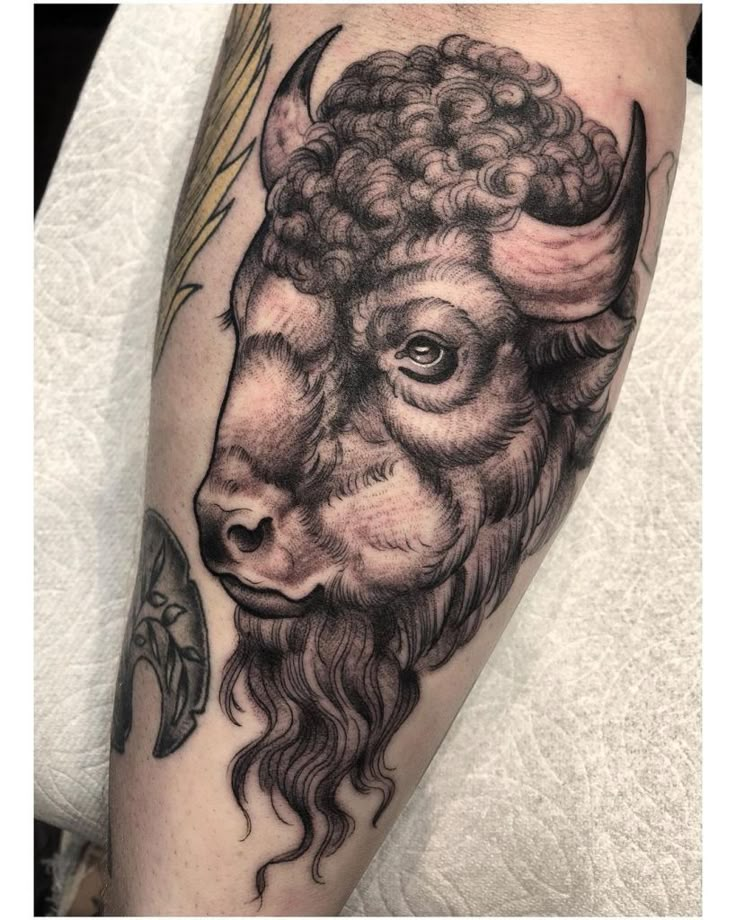

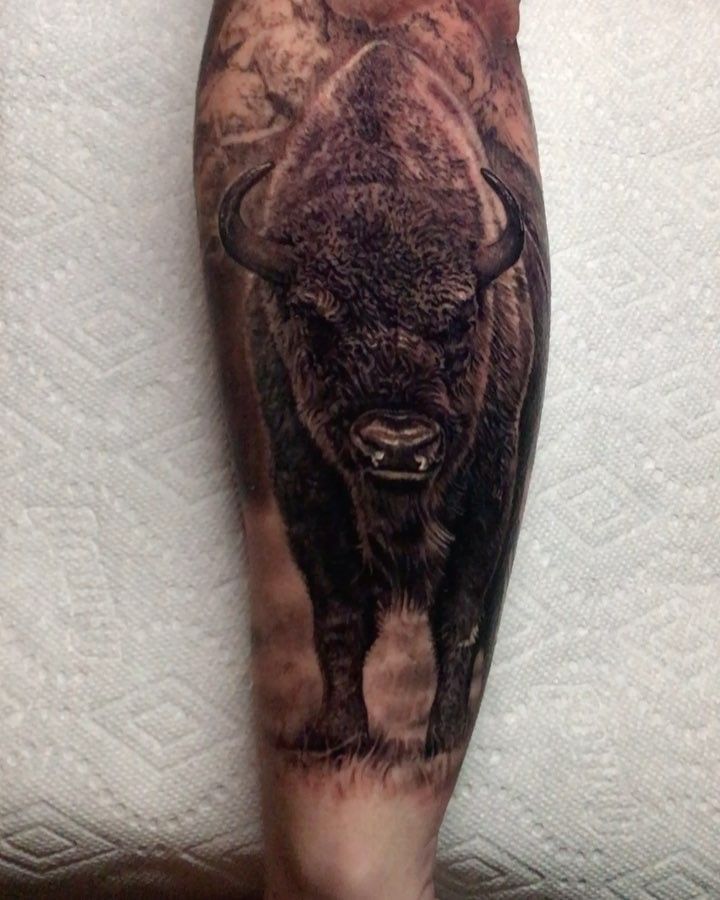

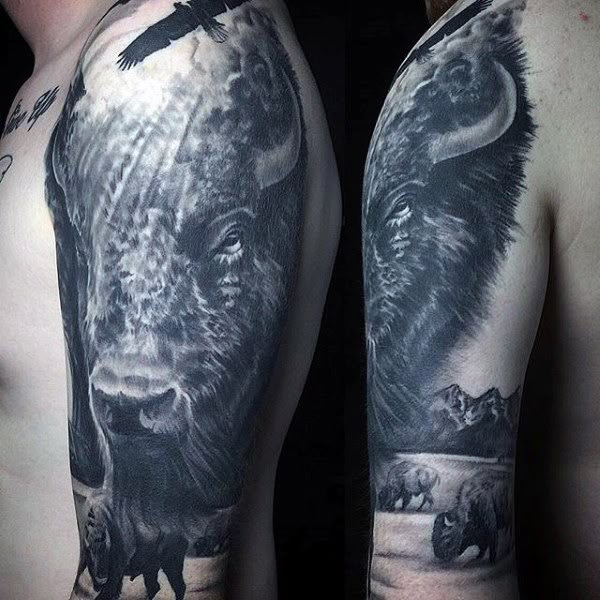

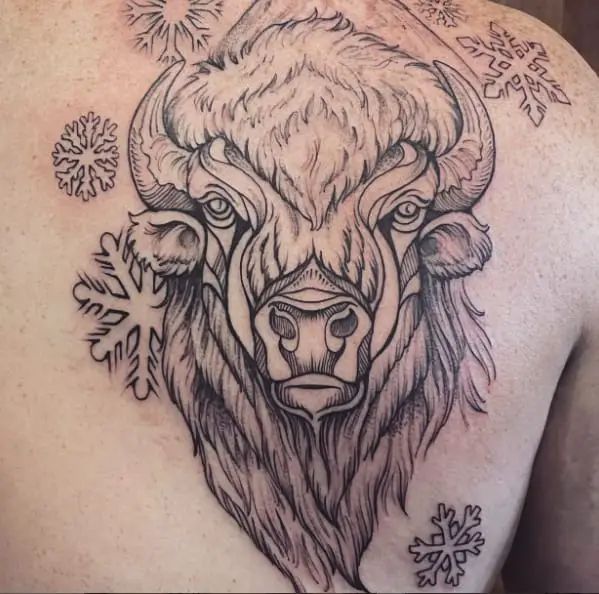



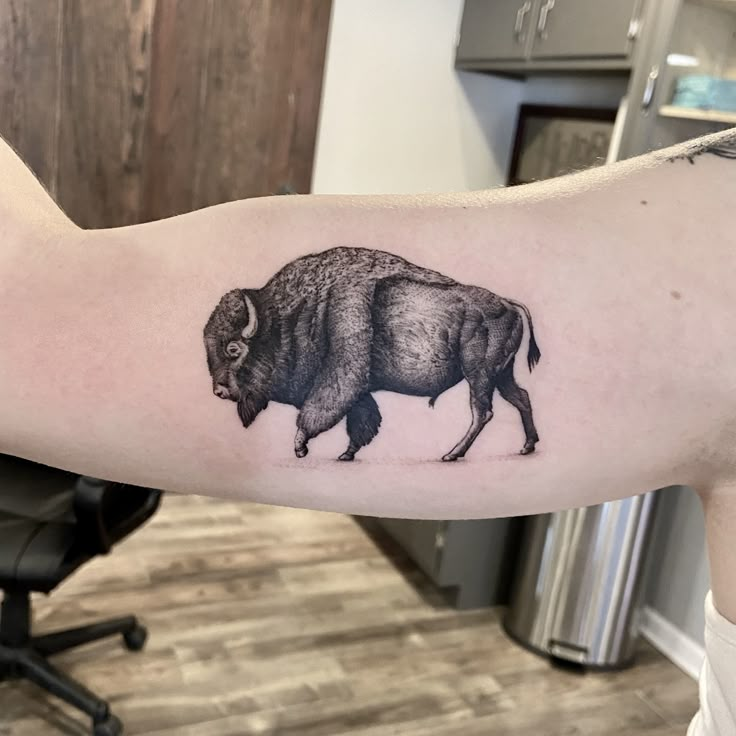
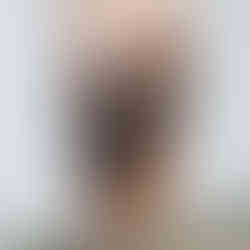


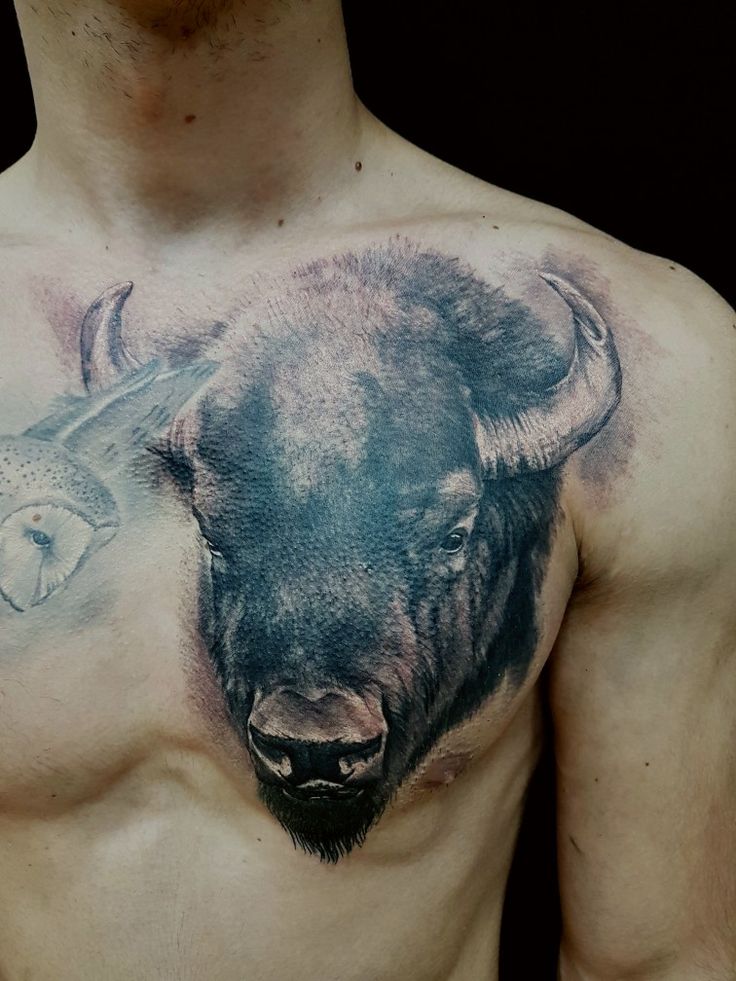

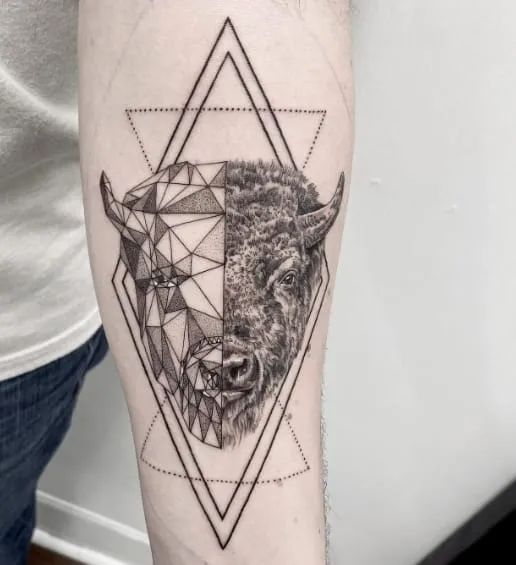



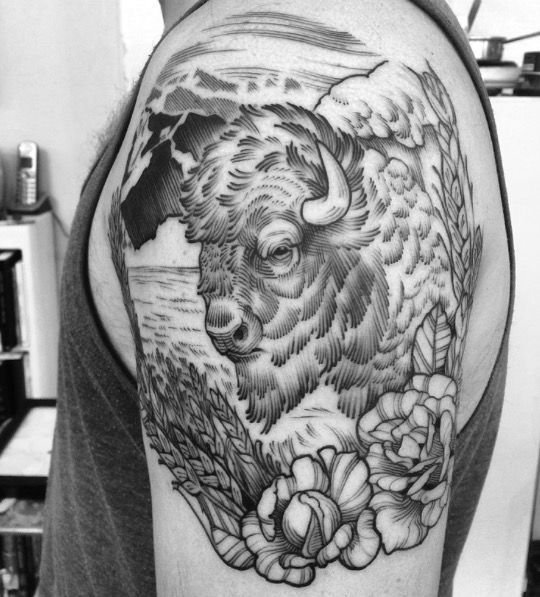

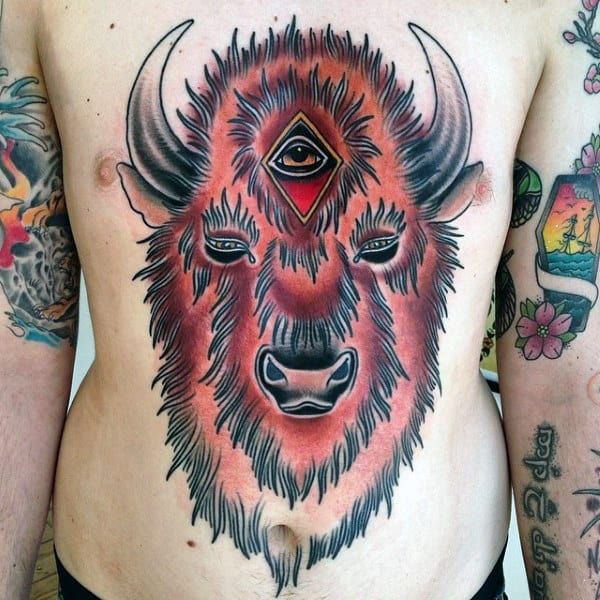

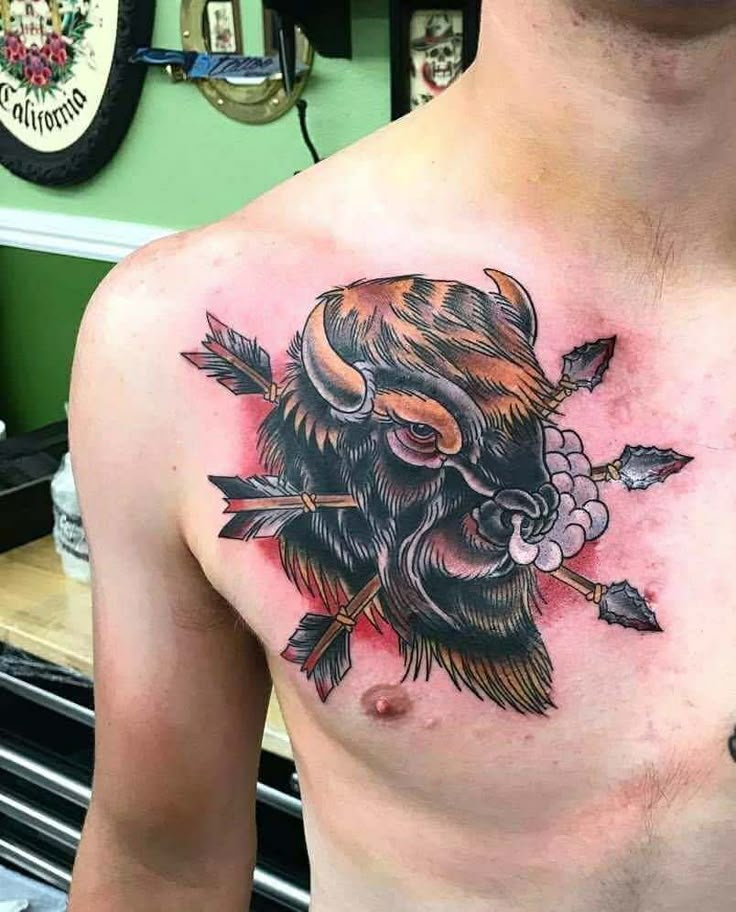

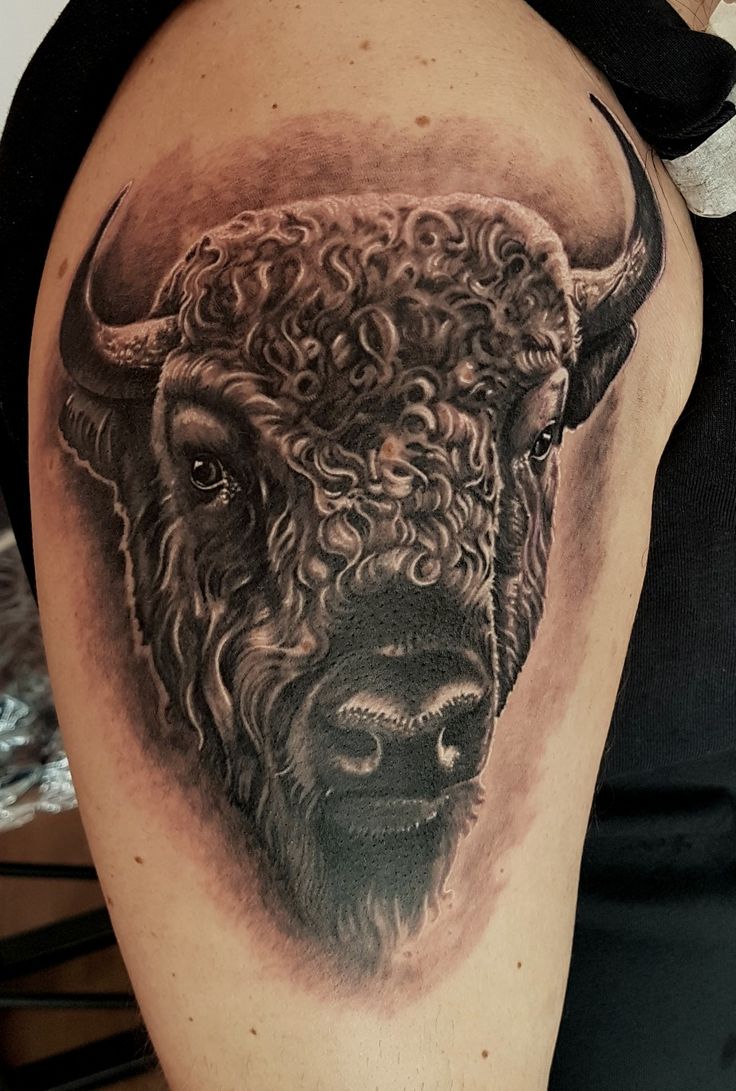

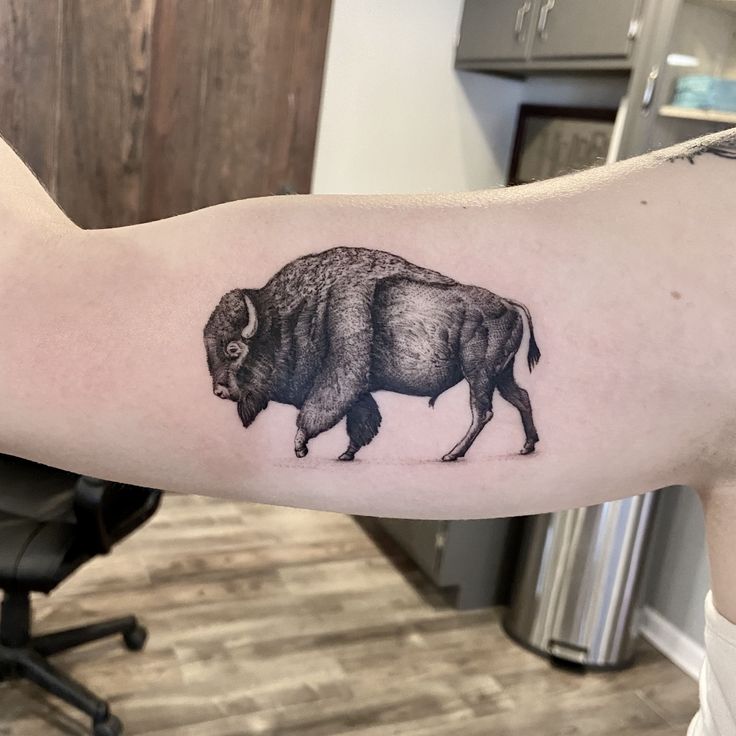

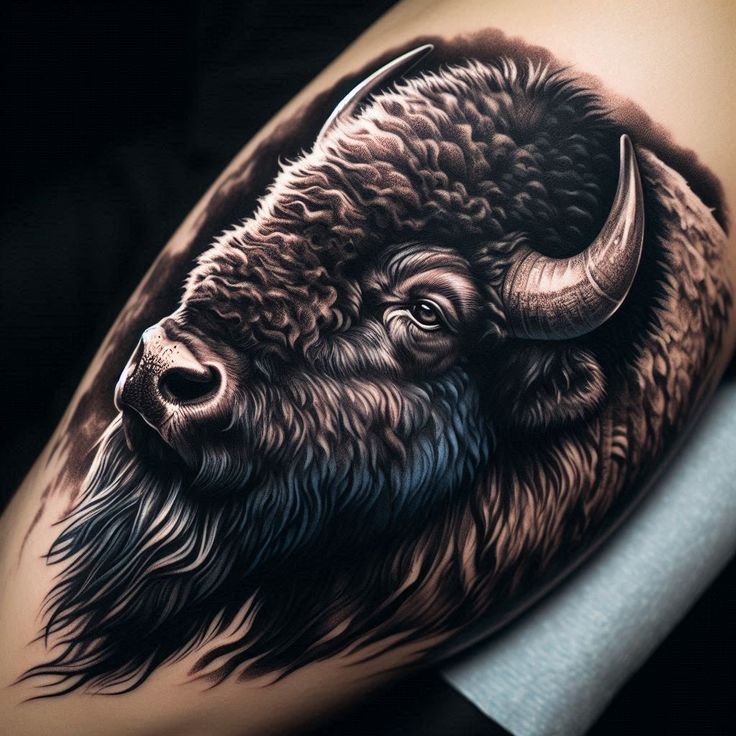



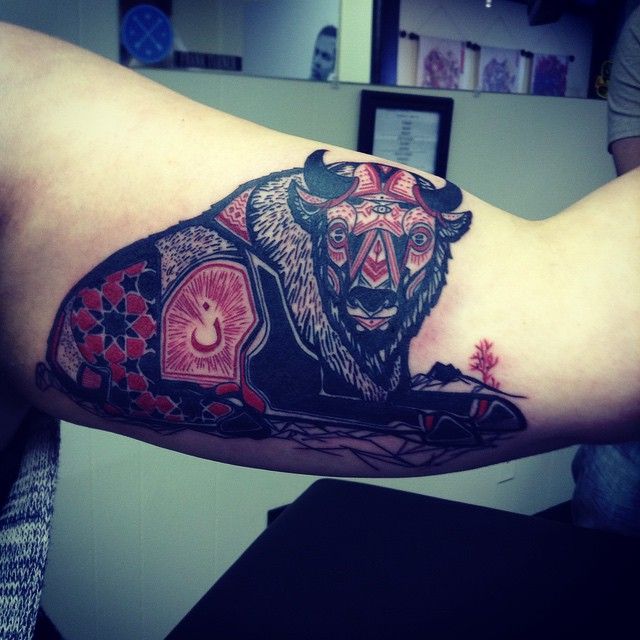

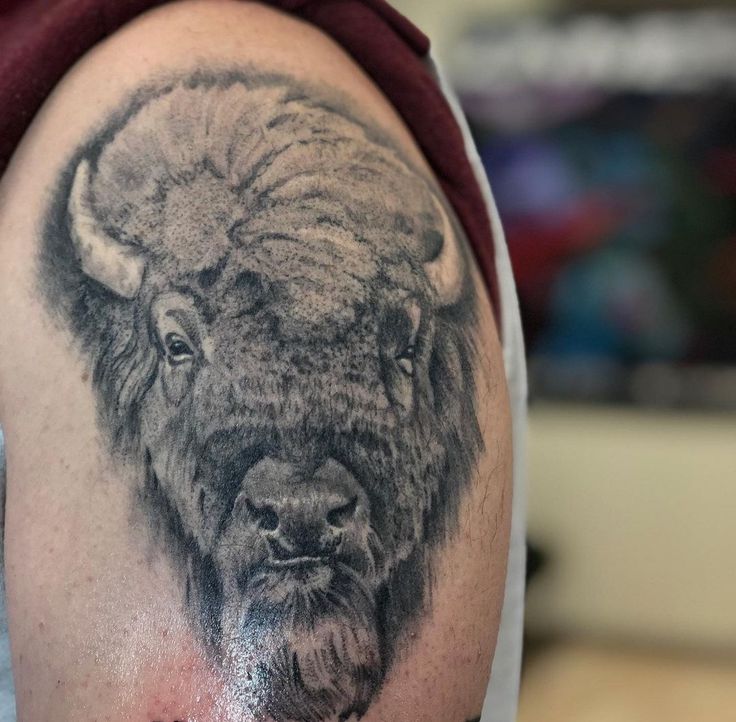

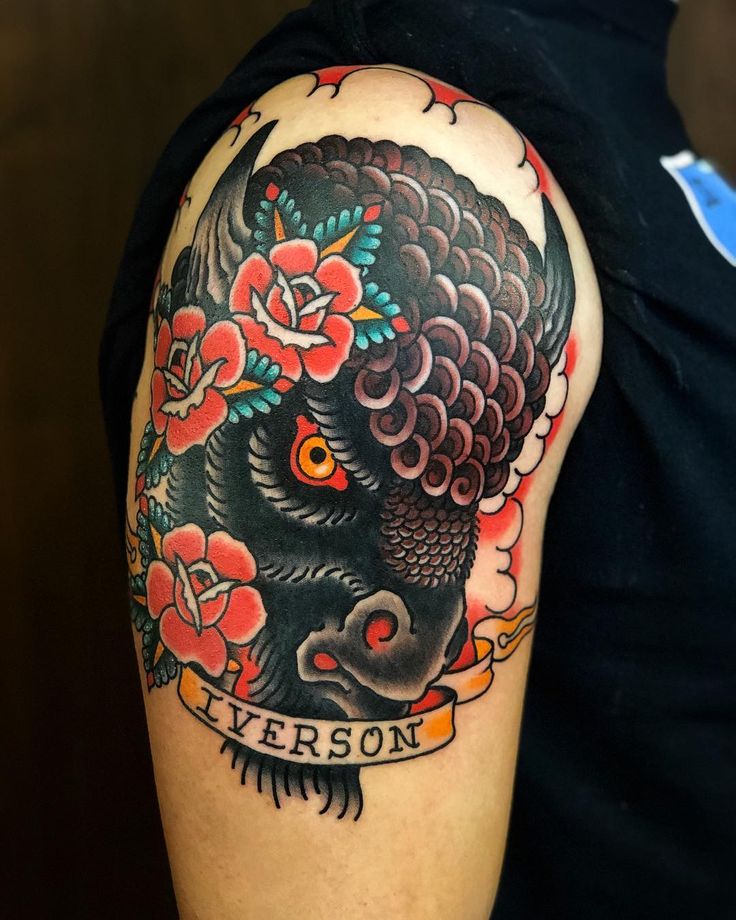

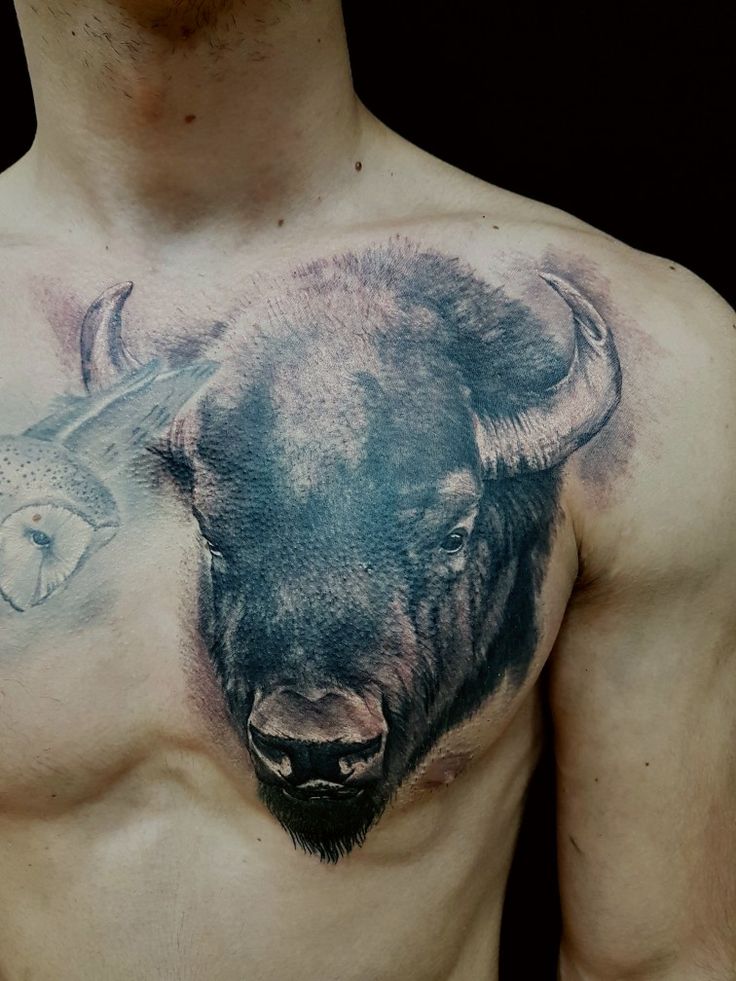

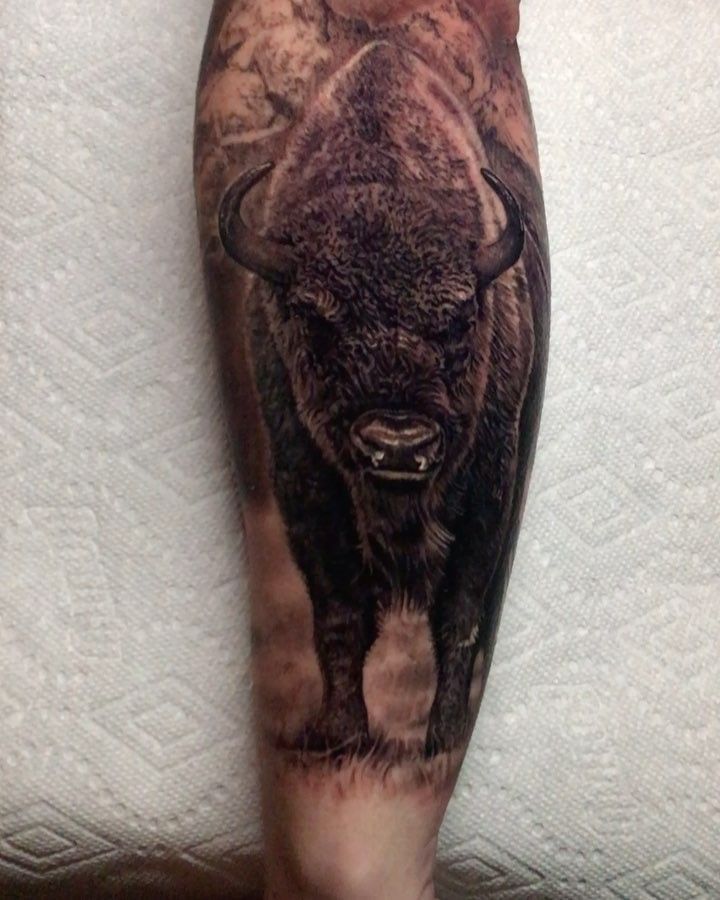

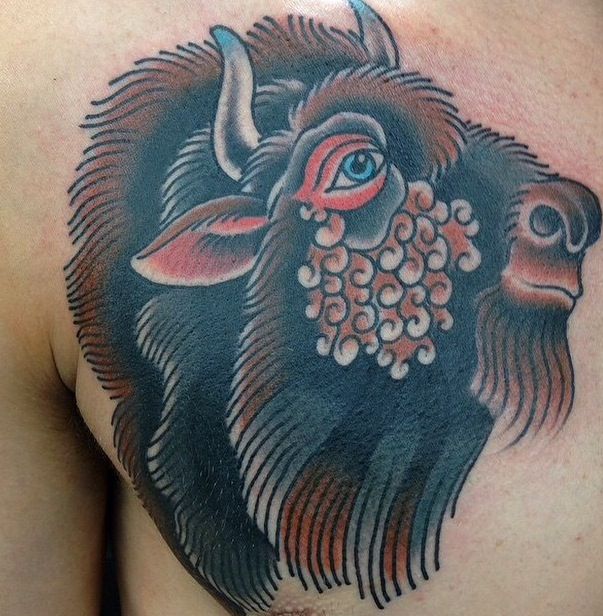

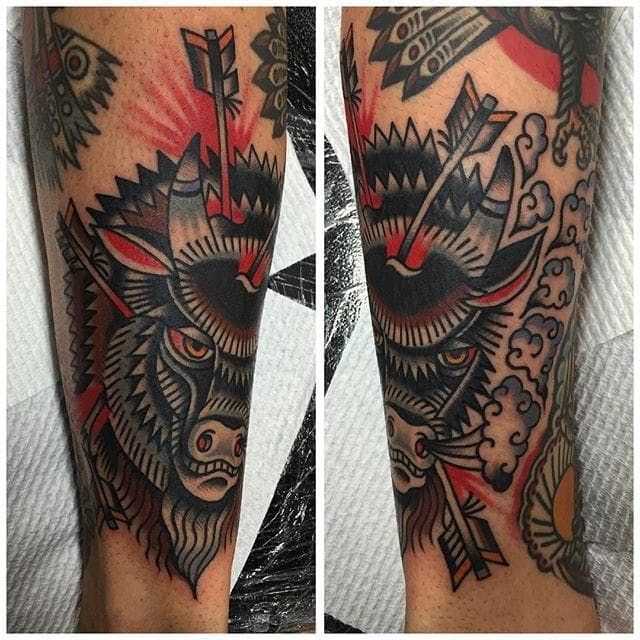

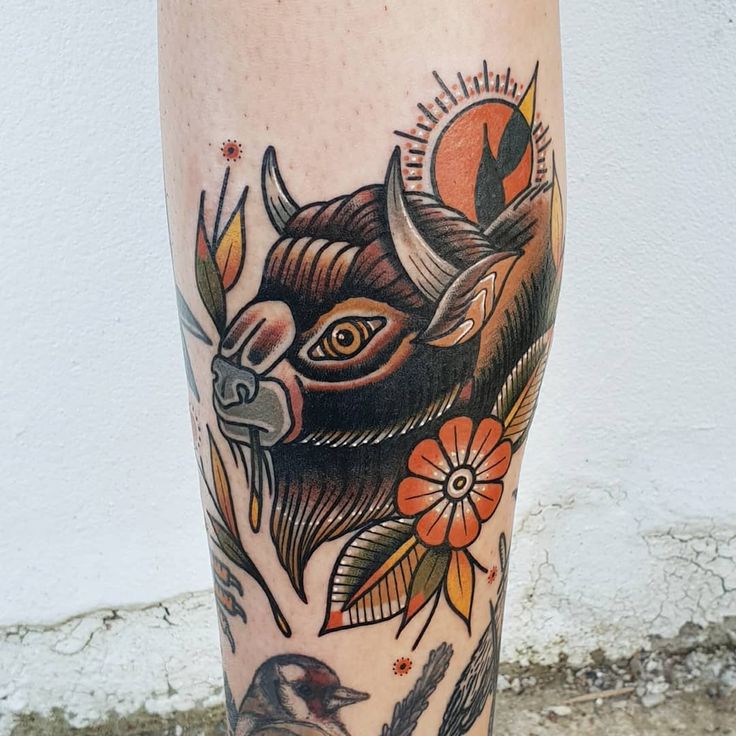





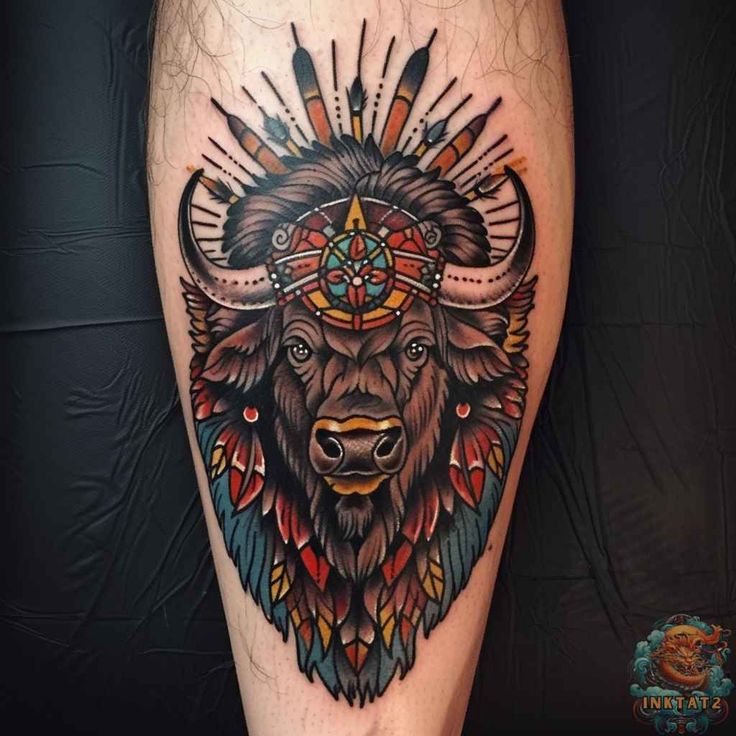

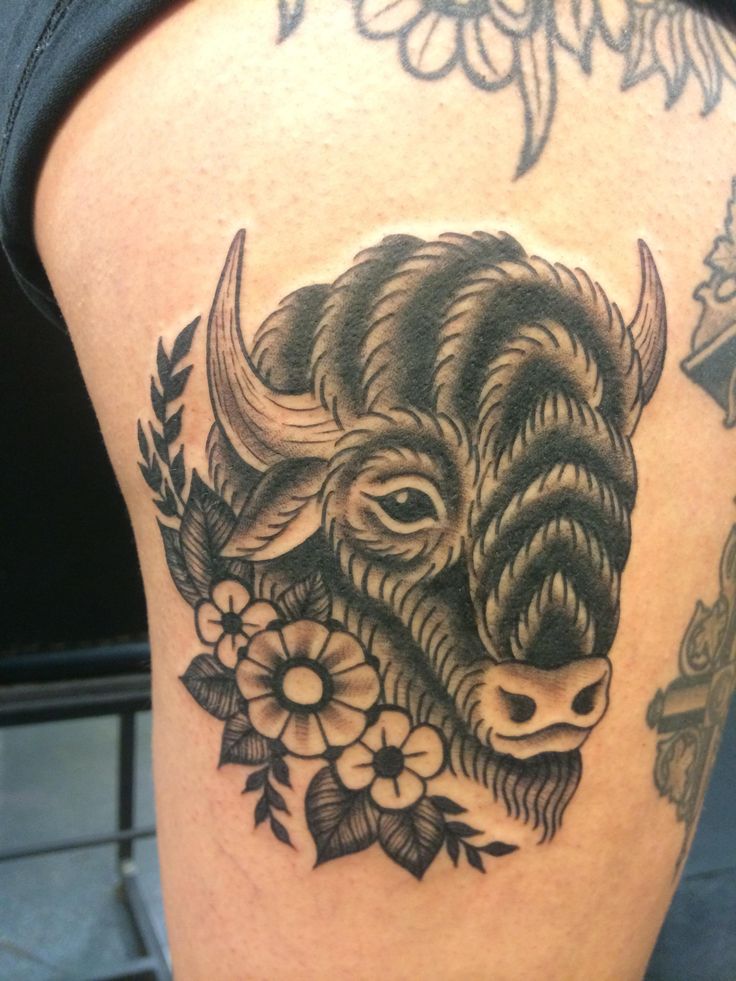

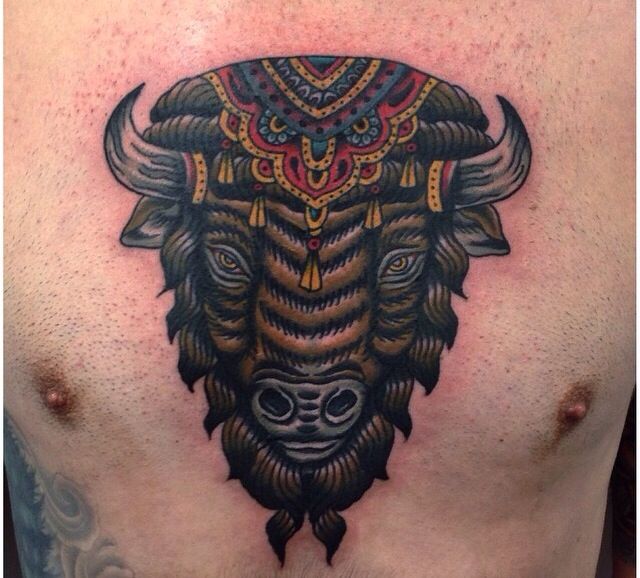

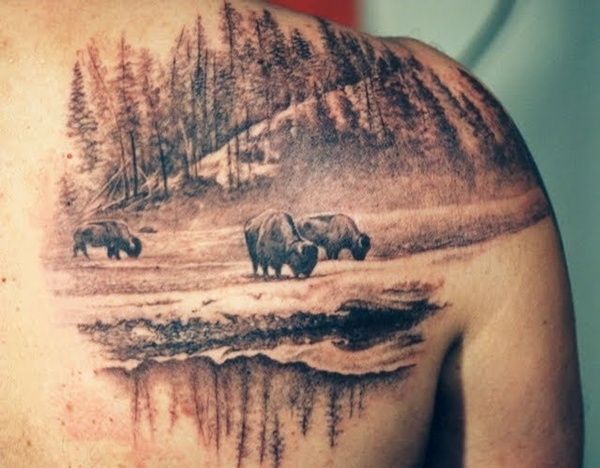

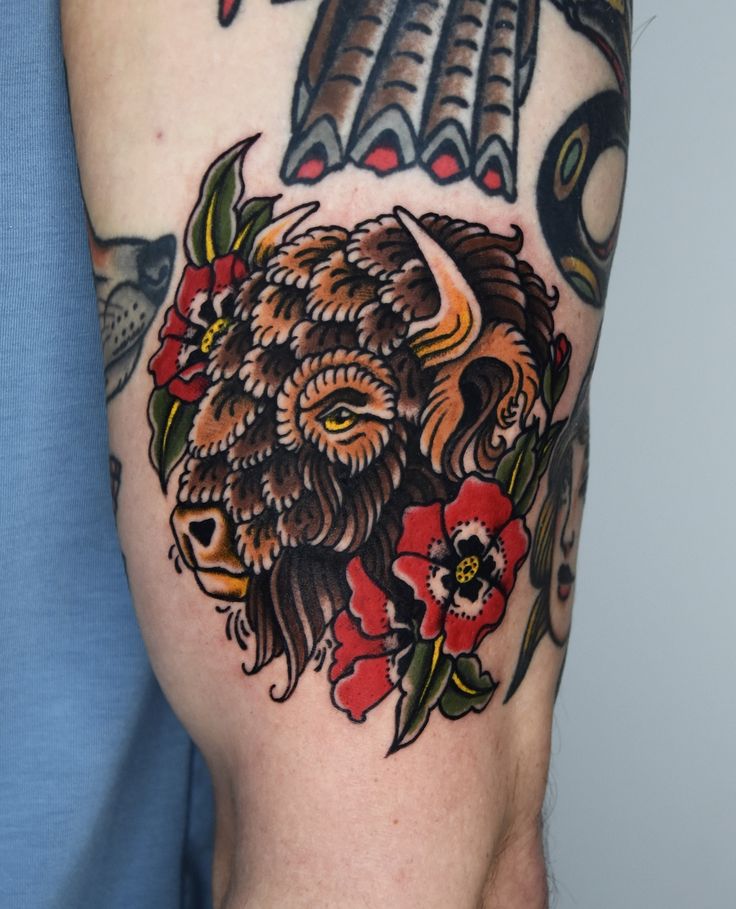

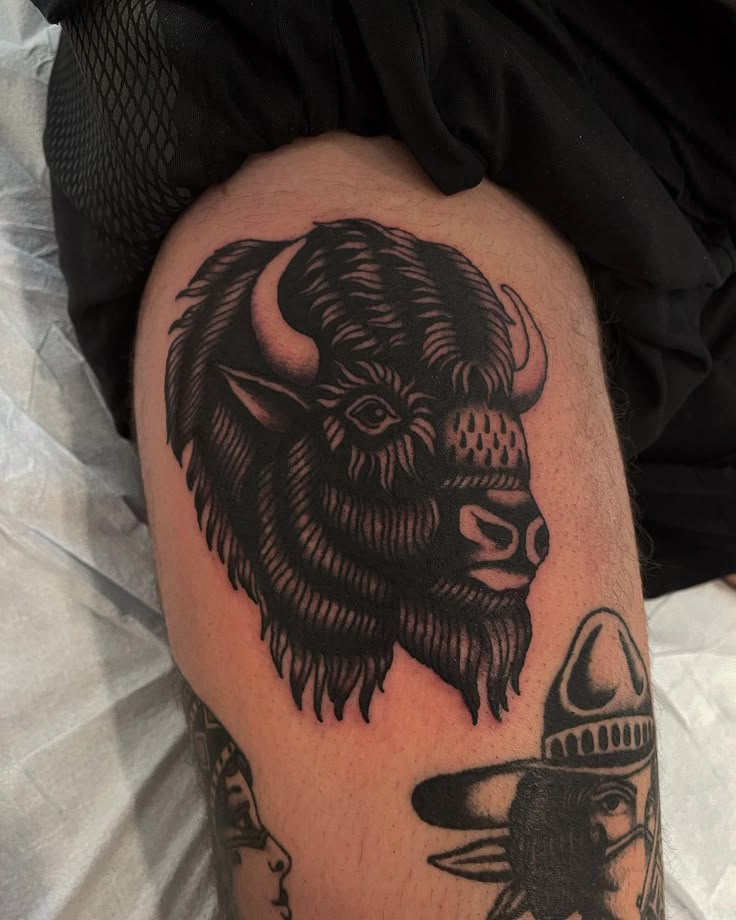

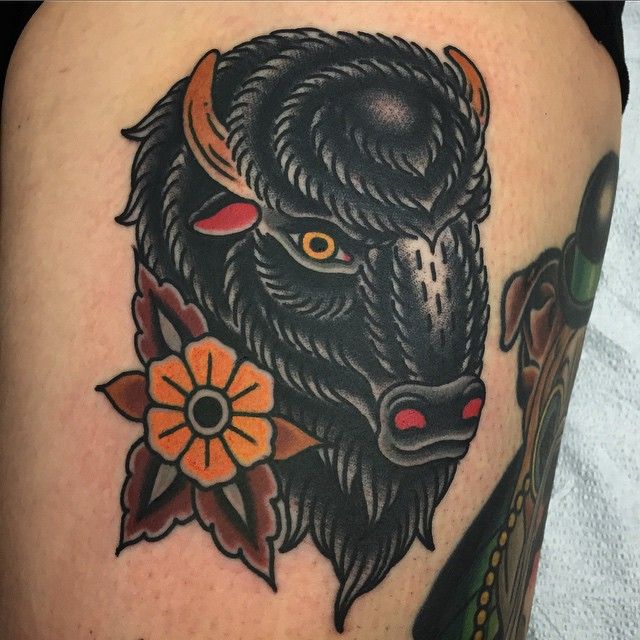

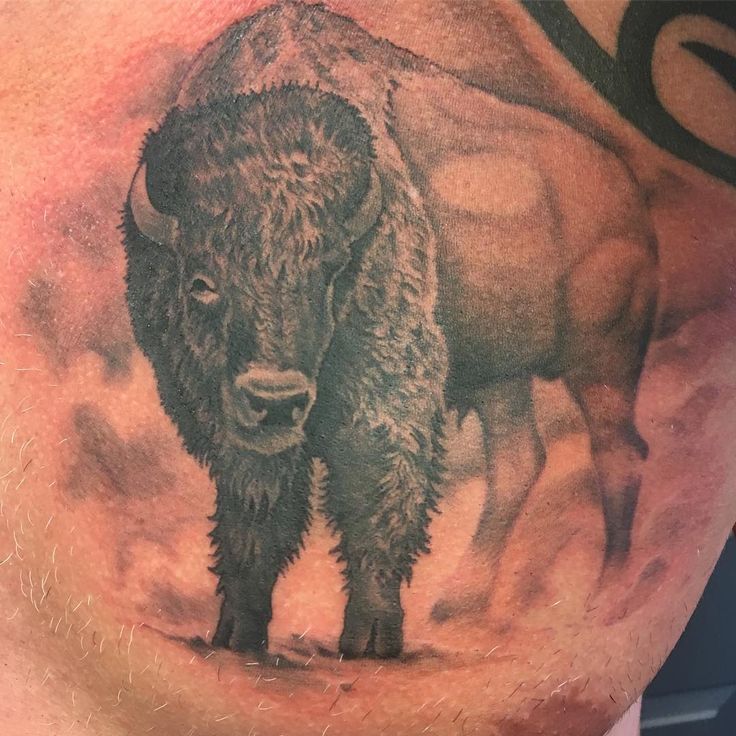

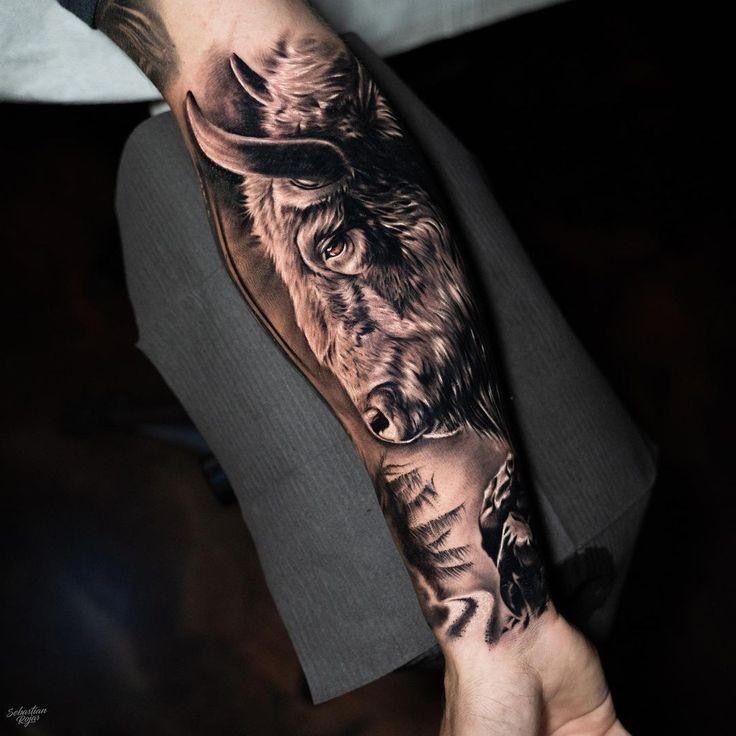



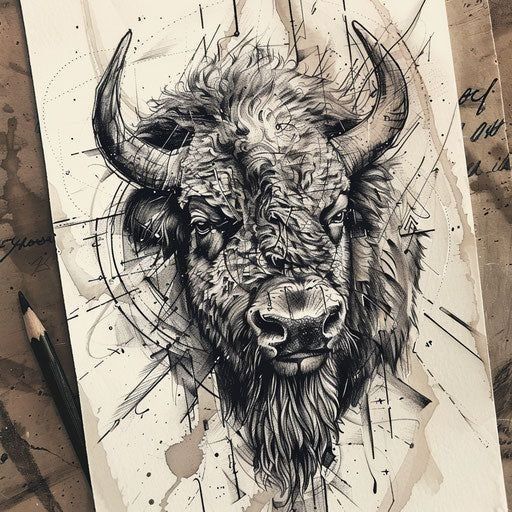

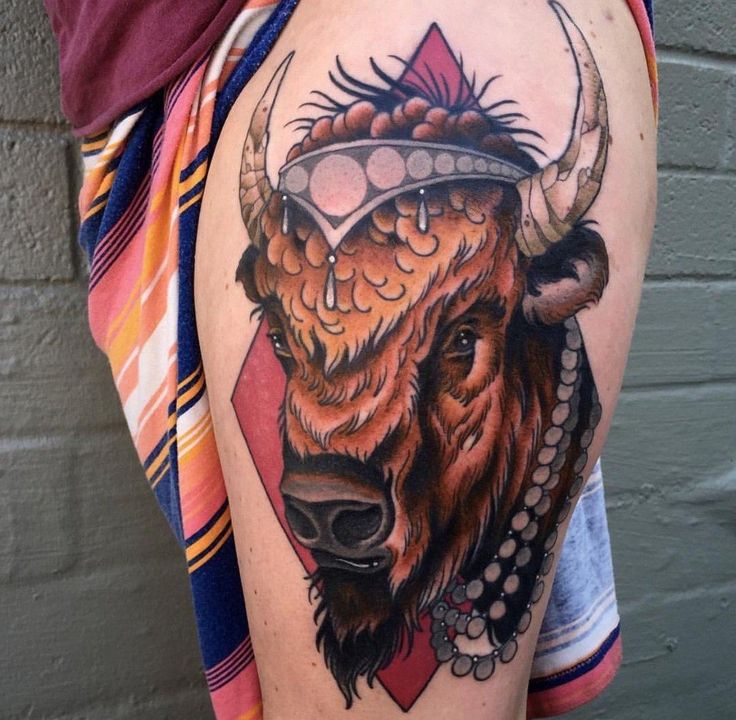



Comments